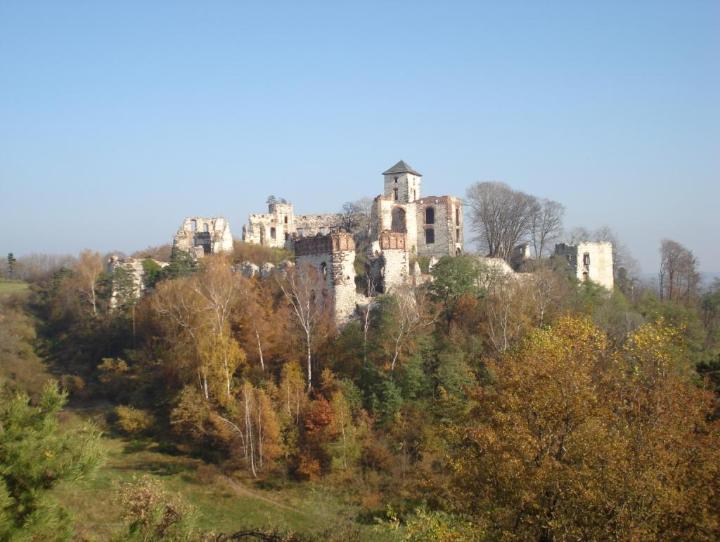
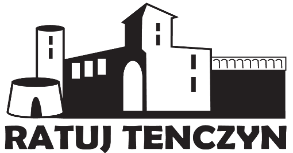

Tenczyn castle is one of the most precious examples of defensive - residential
architecture in Małopolska region. It is situated on a volcanic outcrop, one of the
dominating hills of the so called Tęczyn Ridge (Garb Tęczyński), above the village of
Rudno, in the administrative district of Krzeszowice, about 25 km west of Cracow -
historic and cultural capital of Poland
architecture in Małopolska region. It is situated on a volcanic outcrop, one of the
dominating hills of the so called Tęczyn Ridge (Garb Tęczyński), above the village of
Rudno, in the administrative district of Krzeszowice, about 25 km west of Cracow -
historic and cultural capital of Poland
History of Tenczyn castle
..................................................................................
The area, where the ruins of the castle can be found, belonged to the widely
branched Toporczyk family of knights of Małopolska already in the beginning of the
14th century. The forefather of the successive line of Tęczyński family was Nawój of
Morawica, first listed in the sources in 1304. He was backing Władysław Łokietek’s
unification policy and supported him in his fight for the Piast succession on the
Polish throne. In 1319 Nawój founded the village of Tenczynek and then prepared the
area of Tęczno forest for building a castle, which was then constructed as a Gothic
stone structure between 1331 and 1361 by his son Andrzej.
branched Toporczyk family of knights of Małopolska already in the beginning of the
14th century. The forefather of the successive line of Tęczyński family was Nawój of
Morawica, first listed in the sources in 1304. He was backing Władysław Łokietek’s
unification policy and supported him in his fight for the Piast succession on the
Polish throne. In 1319 Nawój founded the village of Tenczynek and then prepared the
area of Tęczno forest for building a castle, which was then constructed as a Gothic
stone structure between 1331 and 1361 by his son Andrzej.
Andrzej held the highest civil office in the country. As the Voivode of Kraków he
substituted the King Kazimir the Great during his absence in Kraków. He was the main
witness at the Royal founding privilege for the Kraków Academy (Akademia Krakowska).
Andrzej’s son Jan also received the highest state honours. He was known as a local
supporter of introducing Louis the Great of Hungary’s daughter, Jadwiga, to the Polish
throne and was one of the founding fathers of the Polish-Lithuanian Union, whose
stipulations made Jagiełło King of Poland. After Jadwiga’s death Jan Tęczyński became
one of two executors of her will and personally envisaged its realization. Following
Władysław Jagiełło’s wish he also received a privilege of using the title of the Royal
governor. Jan’s son, Andrzej, won esteem in the royal court and knights’ circles, having
taken part in the battle of Grunwald with his own private company. According to some
sources, after the victory the King decided for some of the noble Teutonic knights to be
imprisoned in one of the towers of the Tenczyn castle.
substituted the King Kazimir the Great during his absence in Kraków. He was the main
witness at the Royal founding privilege for the Kraków Academy (Akademia Krakowska).
Andrzej’s son Jan also received the highest state honours. He was known as a local
supporter of introducing Louis the Great of Hungary’s daughter, Jadwiga, to the Polish
throne and was one of the founding fathers of the Polish-Lithuanian Union, whose
stipulations made Jagiełło King of Poland. After Jadwiga’s death Jan Tęczyński became
one of two executors of her will and personally envisaged its realization. Following
Władysław Jagiełło’s wish he also received a privilege of using the title of the Royal
governor. Jan’s son, Andrzej, won esteem in the royal court and knights’ circles, having
taken part in the battle of Grunwald with his own private company. According to some
sources, after the victory the King decided for some of the noble Teutonic knights to be
imprisoned in one of the towers of the Tenczyn castle.
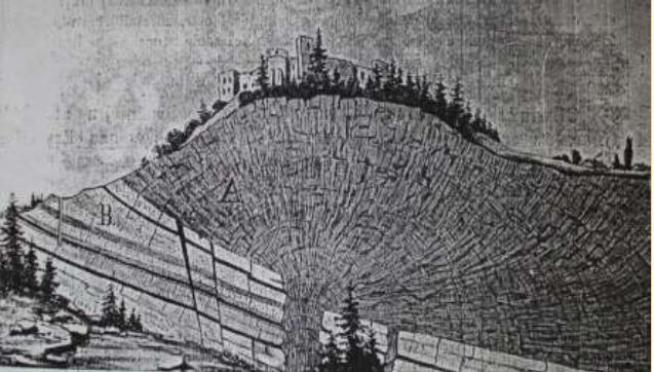
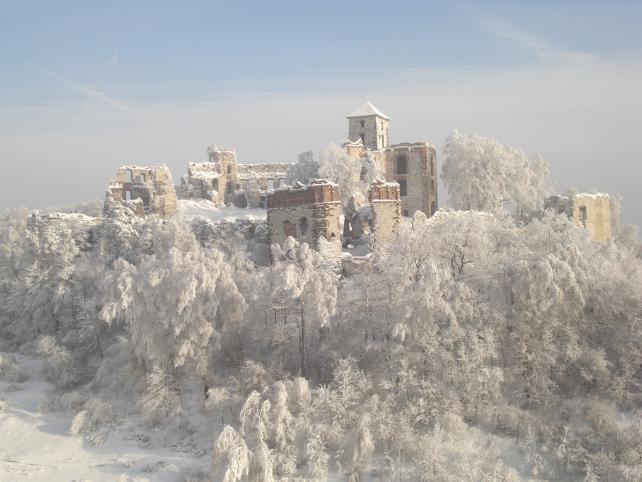
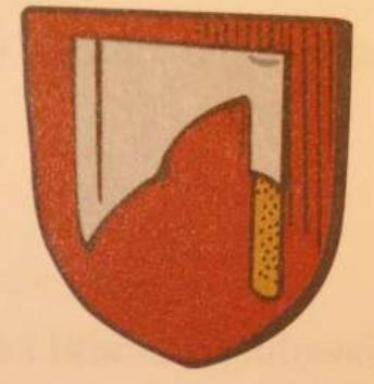
Tęczyński family coat of arms - battleaxe
In 1527 Tęczyński family got the title of the counts of the Holy Roman Empire from Emperor
Charles V and their coat of arms - battleaxe - became ornamented with two-headed Emperor’
s eagles. In 1561 Emperor Ferdinand I of Austria addend a new ornament to the coat of arms
– a lion wearing a crown and holding a battleaxe.
Between 1563 and 1593 the castle was completely renovated by the castellan Jan Tęczyński
and modified into a Renaissance residence with a courtyard with vaulted galleries,
surrounded with outer defensive bastion walls. Since then it became a powerful cultural
centre.
Charles V and their coat of arms - battleaxe - became ornamented with two-headed Emperor’
s eagles. In 1561 Emperor Ferdinand I of Austria addend a new ornament to the coat of arms
– a lion wearing a crown and holding a battleaxe.
Between 1563 and 1593 the castle was completely renovated by the castellan Jan Tęczyński
and modified into a Renaissance residence with a courtyard with vaulted galleries,
surrounded with outer defensive bastion walls. Since then it became a powerful cultural
centre.
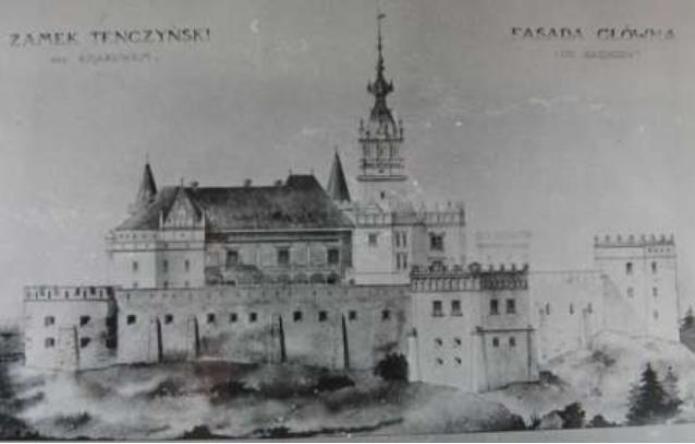
In 1637 the last male successor of the family, Jan Magnus, died (he is now buried in St
Catherine’s church in Tenczynek). The castle went successively into the hands of Opaliński,
Sieniawski, Czartoryski and Potocki families.
During the Swedish invasion, known as the Deluge Tenczyn was captured by the Swedes,
who were looking for the royal treasury – assumed to be hidden there. When that appeared
to be not true, the raiders plundered the castle and set fire in it during withdrawal. The oldest
image of the castle comes from the period of the Swedish Deluge. It is a print by Eric
Dahleberg - Swedish artist, architect and defensive building theorist. Despite reconstruction,
the castle never came back to its original glory. But it was still used and often changed
owners. They did not want, however, to bear cost of its maintenance. In 1748 a fire started by
lightening consumed a part of the castle. Since that moment the castle was systematically
falling into ruin, and the maintenance work on it had a very limited character.
After Word War 2 the castle was confiscated from the Potocki family, who were its last
owners, by the state, nationalised and given under the management of Krzeszowice
commune. At present Tenczyn is in the state of construction disaster and requires
immediate maintenance work.
Throughout the centuries the Tęczyński family constituted Polish political and aristocratic
elite and played a decisive role in Polish history. Its turbulent history was an inspiration for
outstanding literary work: Pieśń o zabiciu Andrzeja Tęczyńskiego is a medieval poem telling
a story of murder of the castellan of Wojnicz in 1461 by the commoners of Kraków, as a
revenge for assaulting an armourer with whom he had an argument. Lublin’s governor
(Starosta) Jan Chrzciciel also came down in literature. He was sent to Sweden by King
Zygmunt August in 1561 as an envoy, and he won the favour of Cecil, King Gustaw Waza’s
daughter. The marriage was never concluded and Jan died soon afterwards in Danish
prison, where he landed while travelling back to his beloved through the Baltic Sea. This
incident was an inspiration for the distinguished poet Jan Kochanowski to write a poem
describing Tęczyński’s fate, and later also for Jan Ursyn Niemcewicz, who described it in
his novel Jan z Tęczyna (Jan of Tęczyn).
Tenczyn castle represents special value for Polish culture both because of architectural and
historic value. It was listed as a historic monument already in the interwar period. In spite of
that it has never been thoroughly renovated.
Catherine’s church in Tenczynek). The castle went successively into the hands of Opaliński,
Sieniawski, Czartoryski and Potocki families.
During the Swedish invasion, known as the Deluge Tenczyn was captured by the Swedes,
who were looking for the royal treasury – assumed to be hidden there. When that appeared
to be not true, the raiders plundered the castle and set fire in it during withdrawal. The oldest
image of the castle comes from the period of the Swedish Deluge. It is a print by Eric
Dahleberg - Swedish artist, architect and defensive building theorist. Despite reconstruction,
the castle never came back to its original glory. But it was still used and often changed
owners. They did not want, however, to bear cost of its maintenance. In 1748 a fire started by
lightening consumed a part of the castle. Since that moment the castle was systematically
falling into ruin, and the maintenance work on it had a very limited character.
After Word War 2 the castle was confiscated from the Potocki family, who were its last
owners, by the state, nationalised and given under the management of Krzeszowice
commune. At present Tenczyn is in the state of construction disaster and requires
immediate maintenance work.
Throughout the centuries the Tęczyński family constituted Polish political and aristocratic
elite and played a decisive role in Polish history. Its turbulent history was an inspiration for
outstanding literary work: Pieśń o zabiciu Andrzeja Tęczyńskiego is a medieval poem telling
a story of murder of the castellan of Wojnicz in 1461 by the commoners of Kraków, as a
revenge for assaulting an armourer with whom he had an argument. Lublin’s governor
(Starosta) Jan Chrzciciel also came down in literature. He was sent to Sweden by King
Zygmunt August in 1561 as an envoy, and he won the favour of Cecil, King Gustaw Waza’s
daughter. The marriage was never concluded and Jan died soon afterwards in Danish
prison, where he landed while travelling back to his beloved through the Baltic Sea. This
incident was an inspiration for the distinguished poet Jan Kochanowski to write a poem
describing Tęczyński’s fate, and later also for Jan Ursyn Niemcewicz, who described it in
his novel Jan z Tęczyna (Jan of Tęczyn).
Tenczyn castle represents special value for Polish culture both because of architectural and
historic value. It was listed as a historic monument already in the interwar period. In spite of
that it has never been thoroughly renovated.
